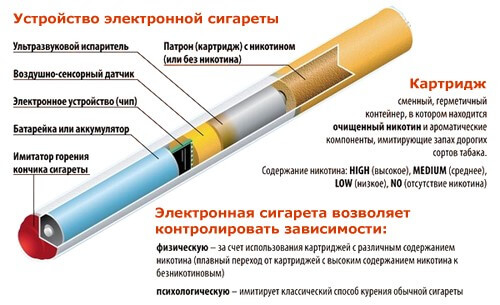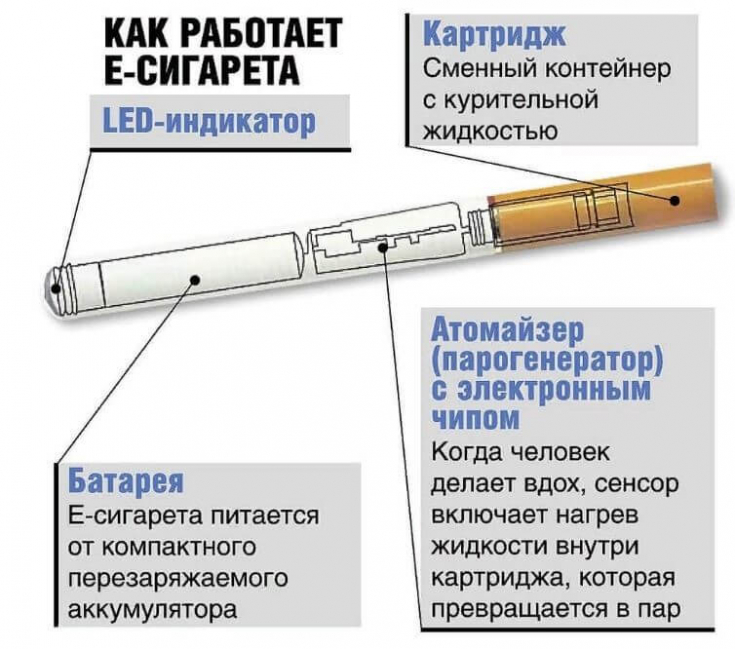EVALI (electronic cigarette, or vaping, product use associated lung injury) − lung injury associated with the use of e-cigarettes or vaping products has been identified in over 2,400 patients and reported as the cause of death in 52 cases.
The majority (78%) of EVALI patients were
Patients reported gradual onset of symptoms: respiratory (95%), constitutional (85%) and gastrointestinal (77%) throughout the day .
For more information about how dangerous the use of electronic cigarettes is, read the article on estet-portal.com.
- Investigation of the causes of EVALI
- Study of harmful substances in bronchoalveolar washings of patients with EVALI
- Vitamin E acetate and the mechanism of EVA developmentLI
Investigation of the causes of EVALI
A significant proportion of EVALI patients have reportedly used one of the products containing tetrahydrocannabinol (THC) that tested positive for vitamin E acetate − a chemical sometimes used as a thickener in illegal THC products.
Follow us on Instagram!
The US Food and Drug Administration (FDA) found that 49% of samples of THC products contained vitamin E acetate and 24% − at least one potential toxin (eg, medium chain triglyceride).
Remove smoker's wrinkles: hyaluronic acid against lip wrinkles
Furthermore, data from trade official resources have reported the addition of various solvents (e.g. vitamin E acetate and medium chain triglycerides) to products that contain THC to improve quality and appearance, provide desirable aroma, flavor and reduce their coststi.
What diseases of the oral cavity are caused by smoking
Study of harmful substances in bronchoalveolar washings of patients with EVALI
Specialists from the Centers for Disease Control and Prevention (CDC) have begun studying harmful substances in the bronchoalveolar lavage of patients with EVALI: vitamin E acetate was found in all 29 samples.
It was not detected in any samples obtained from 99 non-EVALI study participants, among whom 52 were non-addicted, 18 − were users of electronic cigarettes that contain nicotine, 29 − smoked regular cigarettes.
In addition, almost all EVALI patients were free from other toxic substances in their swabs:
- vegetable oils;
- medium chain triglyceride oils;
- coconut oil;
- petroleum distillates;
- terpene additives.
Vitamin E acetate was not detected in swabs from three patients with a probable diagnosis of EVALI.

Vitamin E acetate and EVALI development mechanism
Vitamin E acetate is commonly used as a dietary supplement and as an ingredient in skin creams.
It is often found in multivitamins and is enzymatically broken down into vitamin E during absorption.
While ingestion and cosmetic use of vitamin E acetate are not generally associated with adverse health effects, little attention has been paid to the safety of inhalation of this substance.
Vitamin E acetate − ester of vitamin E (.alpha.-tocopherol) and acetic acid.
Its structure contains a long aliphatic chain that can penetrate the surfactant layer to bind the molecule in parallel with phospholipids.
Phosphatidylcholine in lung surfactant undergoes conversion to a liquid-crystalline phase under the influence of an increased amount of tocopherols, such as vitamin E acetate.
The transition to the liquid-crystalline phase causes the surfactant to lose its ability to maintain the surface tension required for normal breathing in the lungs, thus providing a mechanism by which vitamin E acetate can cause respiratory dysfunction.
Another potential mechanism for the harmful effects of vitamin E acetate is to cause lung injury when it is heated in e-cigarette products, which in turn creates ketene by cleaving off the acetate group.
Ketene − it is a reactive compound which, depending on the concentration, can cause lung irritation.
The CDC is currently studying ways to quantify ketene and its effects in bronchoalveolar washings.

Scientists are currently conducting additional studies on the respiratory effects of inhaled vitamin E acetate in aerosol form, the results of which will provide information about the isolated infliction of lung injury by this substance.
But there are a number of certain restrictions.
For example, it is possible that vitamin E acetate − it is a marker of the influence of alternative toxic substances.
How facial skin aging occurs and is it possible to stop the process
Alternative toxic substances must meet at least three criteria:
- correlate with the presence of vitamin E acetate in bronchoalveolar washings;
- be common in the US;
- included in THC product liquids.
Scientists have not been able to identify a toxic substance other than vitamin E acetate that meets these three requirements, and active research is ongoing on this issue.







Add a comment